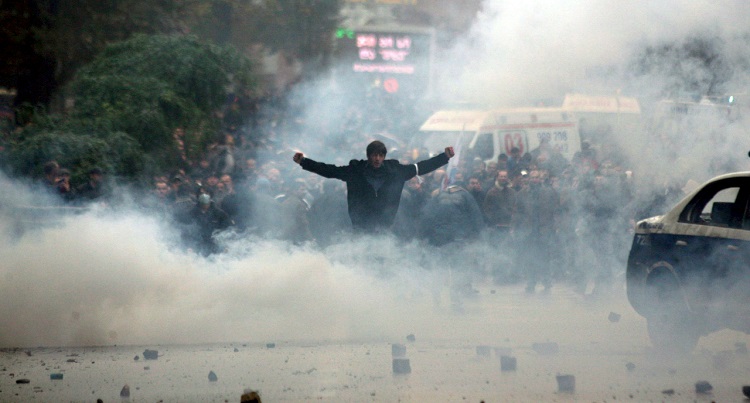14 years since the worst political crisis in Georgia which nearly ended UNM leadership

The international organisations have evaluated November 2007 as the worst political crisis in Georgia since the Rose Revolution in 2003. Photo: Archive
Crowds have gathered in front of the parliament building in Tbilisi today, 14 years after the November 2007 political crisis in Georgia, which nearly ended the rule of the United National Movement leadership in the country.
November 2007 mass rallies against then-President Mikheil Saakashvili and his government, the brutal dispersal of peaceful protesters and an attack on Imedi TV are still relevant today, as the former president, who has been charged for the incidents of 2007, is in prison now.
 Demonstrations against the UNM government kicked off on 28 September 2007 and reached up 100,000 people by 2 November, when they gathered in front of the parliament building in central Tbilisi. Photo: 1TV archive
Demonstrations against the UNM government kicked off on 28 September 2007 and reached up 100,000 people by 2 November, when they gathered in front of the parliament building in central Tbilisi. Photo: 1TV archive
Urging Saakashvili to step down the protests were organised by a coalition involving major opposition political parties and were supported by billionaire Badri Patarkatsishvili, who owned Imedi TV that time.
On 7 November, 2007 a series of anti-government protests took place across Georgia and ended with protesters being dispersed by police who used tear gas and water cannons.
A total of 508 people were taken to hospital when riot police dispersed thousands of protesters in various parts of Tbilisi.
 Saakashvili accused Russia and Patarkatsishvili of being involved in an attempted coup. He declared a nationwide state of emergency that lasted for 15 days. Photo: 1TV archive
Saakashvili accused Russia and Patarkatsishvili of being involved in an attempted coup. He declared a nationwide state of emergency that lasted for 15 days. Photo: 1TV archive
Later on 7 November, riot police attacked Imedi TV while a news programme was being broadcast live on air. Police officers in masks and carrying assault rifles were seen sealing off the office. The broadcaster, which the then-government claimed was biased and pro-opposition, was subsequently switched off.
International organisations evaluated November 2007 as the worst political crisis in Georgia since the Rose Revolution in 2003.
 Tweet
Tweet  Share
Share